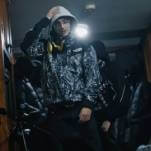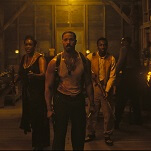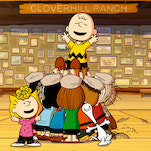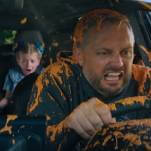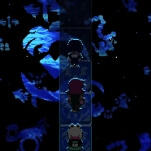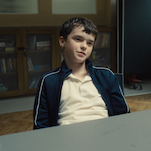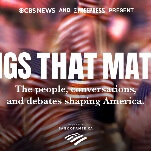Careful
“Why did you marry that wretched swan feeder?” —Count Knotkers, Careful
Things I learned about Canadian wunderkind Guy Maddin and his home city from his last film, 2007’s My Winnipeg:
- Winnipeggers are allowed by civic law to carry the keys to all their old homes.
- After a stable fire at a racetrack in the ’20s, a herd of frantic horses stampeded into icy river waters and were frozen into place, providing children with statuesque obstacles to skate around.
- There was once a locally produced TV series called Ledge Man, which always opened on a man on a ledge threatening to jump, until Maddin’s mother talked him out of it.
- Several of Winnipeg’s streets were named after revered prostitutes and brothel founders.
- Maddin has some lingering Freudian issues.
You can probably guess which of those “facts” are true, but it’s telling that Maddin’s lone attempt at autobiography is about 95 percent hilarious bullshit, 5 percent verifiable truth, and 100 percent the work of a madly inventive prankster whose connections to the city run deep and true. The style and content of his “docu-fantasy” run so closely to the purely fictional efforts in the rest of his filmography, which makes it clear that he’s been making personal films all along. Percolating beneath those bizarre, whimsical stories of, say, a beer-sponsored Depression-era dirge competition (The Saddest Music In The World) or an orphanage populated by children with mysterious head wounds (Brand Upon The Brain!) is a constant undercurrent of psychosis, aberrant sexuality, and familial discord. Without delving too deeply into armchair therapy, it would seem that Maddin the artist has become a master at laughing the demons away.
When Maddin first broke onto the scene with 1988’s Tales From The Gimli Hospital and 1990’s Archangel, the only way most critics could begin to describe him was by evoking David Lynch’s Eraserhead. The two had plenty of things in common: Both converted minimal resources into surreal, dreamlike underground classics; both had sensibilities rooted in cinema and cultures past, intersecting at the dark expressionism of early German silent film; and both channeled raw psychosexual fear into disturbing, blackly comic abstraction. At the same time, the label “the Canadian David Lynch” only hints at Maddin’s avant-garde singularity; put their films side by side, picking any frames at random, and there’s certainly no mistaking one for the other. In terms of retro-style, Maddin stands alone in creating fevered pastiches of late silent and early sound-era movies: He mixes and matches the Germans and the Soviets, adds vibrant color tinting and vintage soundtrack crackle, and draws from an immense bag of nearly hundred-year-old tricks, including dramatic intertitles, smeary lenses, papier-mâché sets, and wildly theatrical acting.
Lately, Maddin has been riding a wave of productivity and broader acclaim, from My Winnipeg to the wonderful touring performances (complete with narrator, orchestra, and Foley team) for Brand Upon The Brain!, and a dazzling creative hat-trick (Dracula: Pages From A Virgin’s Diary, Saddest Music, and Cowards Bend The Knee). But to my mind, Maddin’s vision really began to crystallize with 1992’s Careful, an outrageously funny, melodramatic tale of repression, incest, sibling rivalry, betrayal, and a touch of supernatural intervention. Set in the extreme isolation of an Alpine village, the film revolves around a group of characters so tightly quartered under the mountain that they can’t help but intermingle in perverse, destructive ways. But as with Maddin’s subsequent films, the tone is deliriously heightened and rambunctious, such that even the grimmest moments are graced by a prankster’s touch. It’s so very wrong to laugh, but it feels oh so right.
The only bad news about Careful is that it never gets better than the opening sequence, which features an old scold narrating warnings to children about not getting out of line. The reason is mostly practical: Nestled below a mountaintop, the tiny kingdom of Tolzbad could be smothered by an avalanche if anyone so much as sneezes too loud. In light of that, one of the telling things about all the warnings is that most of them don’t apply to the dangers of triggering an avalanche. “Don’t spill it,” “Hold your horses,” “Think twice,” “I’m sure you could live without that,” et al.—it’s like the authority figures in the town have seized on the opportunity to beat the populace into meek, unthinking subservience. And it might have worked, too, except that extreme repression tends to yield some major pushback. Here’s the clip:

